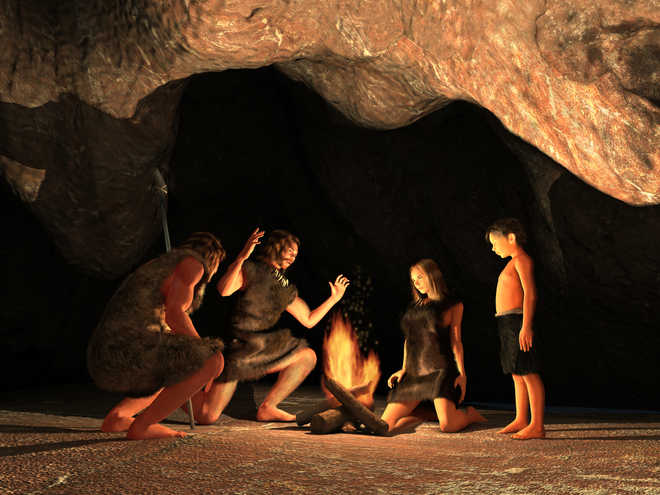Los Angeles
Neanderthals lacked the hand- eye coordination to draw vivid renderings of animals and other figures, unlike early modern humans, according to a study that may explain the differences in how both groups hunted.
While Neanderthals had large brains and made complex tools, they but never demonstrated the ability to draw recognisable images.
This artistic gap may be due to differences in the way they hunted, according to scientists from University of California, Davis in the US.
Neanderthals used thrusting spears to bring down tamer prey in Eurasia, while Homo sapiens, or modern humans, spent hundreds of thousands of years spear-hunting wary and dangerous game on the open grasslands of Africa.
Richard Coss, a professor at UC Davis, said that the hand-eye coordination involved in both hunting with throwing spears and drawing representational art could be one factor explaining why modern humans became smarter than Neanderthals.
In the study published in the journal Evolutionary Studies in Imaginative Culture, Coss examined archaeological evidence, genomics, neuroscience studies, animal behaviour and prehistoric cave art.
He proposed a new theory for the evolution of the human brain.
According to Coss, Homo sapiens developed rounder skulls and grew bigger parietal cortexes—the region of the brain that integrates visual imagery and motor coordination – because of an evolutionary arms race with increasingly wary prey.
Early humans hunted with throwing spears in sub-Saharan Africa for more than 500,000 years—leading their increasingly watchful prey to develop better flight or fight survival strategies, Coss said.
Some anthropologists have suggested that throwing spears from a safe distance made hunting large game less dangerous, he said.
However, until now, “no explanation has been given for why large animals, such as hippos and Cape buffalo, are so dangerous to humans,” Coss said.
“Other nonthreatening species foraging near these animals do not trigger alert or aggressive behaviour like humans do,” he said.
Neanderthals, whose ancestors left Africa for Eurasia before modern human ancestors, used thrusting spears at close range to kill horses, reindeer, bison, and other large game that had not developed an innate wariness of humans, he said.
“Neanderthals could mentally visualise previously seen animals from working memory, but they were unable to translate those mental images effectively into the coordinated hand-movement patterns required for drawing,” Coss said.
The visual imagery employed in drawing regulates arm movements in a manner similar to how hunters visualise the arc their spears must make to hit their animal targets, he said.
These drawings could have acted as teaching tools.
“Since the act of drawing enhances observational skills, perhaps these drawings were useful for conceptualising hunts, evaluating game attentiveness, selecting vulnerable body areas as targets, and fostering group cohesiveness via spiritual ceremonies,” he said.
As a result, the advent of drawing may have set the stage for cultural changes, Coss said.
“There are enormous social implications in this ability to share mental images with group members,” he said.




 Driving Naari Programme launched in Chandigarh
Driving Naari Programme launched in Chandigarh































